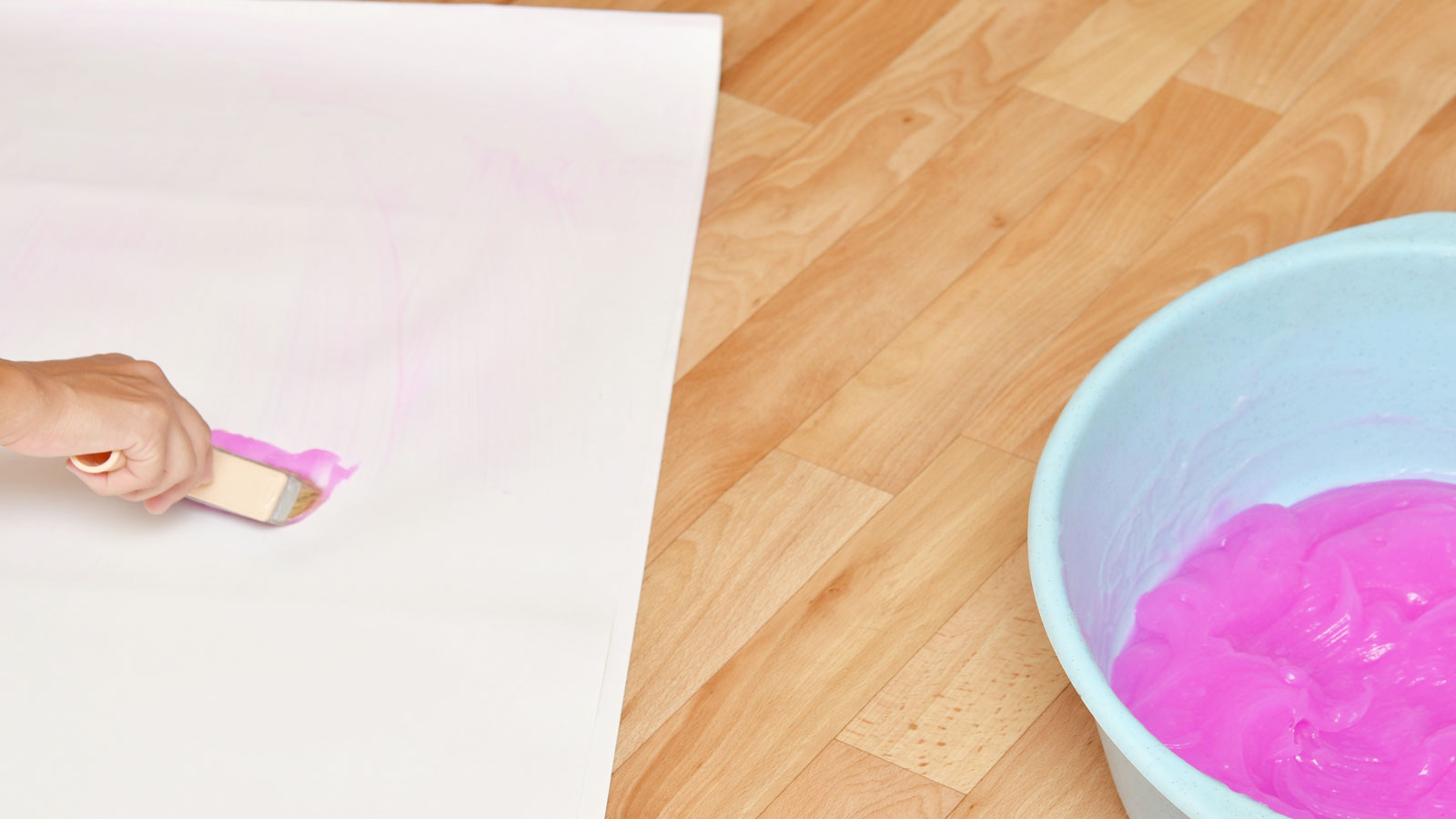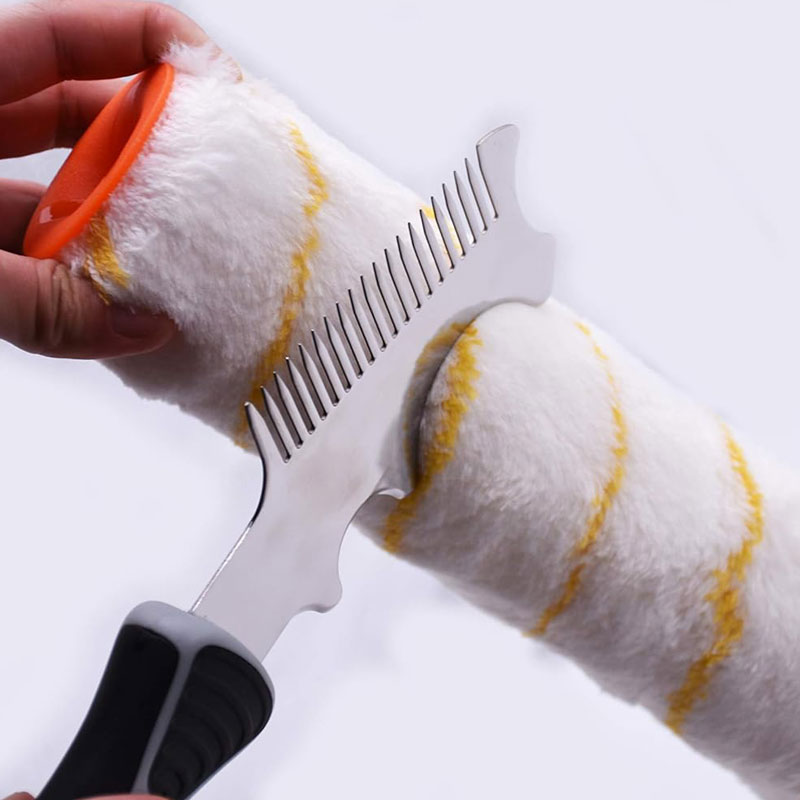Want to know how to dispose of wallpaper paste safely? Follow this quick and simple guide
Knowing how to dispose of wallpaper paste correctly can save you from some serious plumbing problems. Alternatively, find out how to put it to good use

As soon as you’ve finished admiring your wallpaper-hanging handiwork, it's time for the less glamorous task of tidying up. This includes knowing how to dispose of wallpaper paste properly. If you get this wrong, you could be in for an expensive visit from a plumber to save the day. One quick tip: don’t pour it down the sink.
If you know how to wallpaper, you’ll have a good idea of how much wallpaper paste you’ll need. Hopefully, you won’t have too much left over to get rid of, but if you do, you can put it to good use elsewhere.
Here you'll find quick and simple tips to ensure you get rid of it the right way, along with a few imaginative ideas so you don't waste it.
Two ways to dispose of wallpaper paste
When it comes to the disposal of wallpaper paste there are effectively two options: watering it down or letting it dry out.
1. Disposal of wet wallpaper paste
Wallpaper paste is commonly water soluble. You need to add water to create the paste. When you have finished with it you simply need to add more water to get it to a consistency that is like water. The thinner the paste the less damage it will cause when you dispose of it.
Do not pour it down your kitchen or bathroom sink. Pour the watered down wallpaper paste down your toilet and flush until all gone. Alternatively, you can pour down an outside drain.
2. Disposal of dry wallpaper paste
If you don’t have much wallpaper paste left, you can leave it in the bucket or container used and wait for it to dry out. Once dry, you can use a paint scraper to dig it out and throw it out with the household rubbish.
Eric Bramlett, owner of Bramlett Estates, offers some smart tips, "For small amounts, you can leave it in the container until it hardens, then toss it in the regular trash." He adds, "For larger quantities, spread it out on something disposable like cardboard or a plastic sheet, let it fully dry, and then scrape it off and bag it before throwing it away."
This option takes longer as you have to wait for the paste to dry, and the more paste you have, the longer it will take. It also involves a little more elbow grease to get the job done properly.

Eric Bramlett is the owner of Bramlett Real Estate. He has extensive experience in real estate development and brokerage management. They have won multiple industry awards and been featured in top media outlets such as Axios, Bloomberg and Forbes.
Try these to keep and dispose of wallpaper paste
Don't put wallpaper paste down the sink
You can put wallpaper paste down the sink, but it is not recommended. As Bramlett, points out, "If you pour any leftover wallpaper paste straight down the sink, it may harden in the pipes and cause a partial or complete blockage."
Bring your dream home to life with expert advice, how to guides and design inspiration. Sign up for our newsletter and get two free tickets to a Homebuilding & Renovating Show near you.
You can dilute the wallpaper paste with water, but this does not guarantee that no traces will be left in the sink. Again, they will harden over time and create blockages.
Bra
If wallpaper paste hardens in the pipes, it will be difficult to get rid of without the intervention of a pro. You may need to call out a plumber to locate the issue and replace the offending pipe or pipes, which will not be cheap.
Bramlett suggests that you leave wallpaper paste to harden: "The safest approach is to let any leftover paste dry out."
He adds a word of warning, "Before you clean up, take a moment to check the label on the paste you’re using. Not all products are the same – some contain extra ingredients that call for different disposal methods."
Uses for leftover wallpaper paste
You can do a few things with leftover wallpaper paste. One of the more practical uses is to water it down a little – around 25% more water – and use it to seal paper-free walls before applying new wallpaper.
Known as sizing, leave it to dry, and the watered-down paste will create a seal on the wall. This will make it easier to put up new wallpaper and slide it into position.
You could get creative and use the leftover paste with any leftover wallpaper you have to decorate furniture such as drawer fronts, shelves, or even light switches. To match the rest of the room, you can try painting over the wallpaper to get the colour you want.
FAQs
How long can I leave wallpaper paste in a bucket?
Wallpaper is typically mixed and used, so it makes sense to mix as much as you need so there's very little waste. Ryan Fitzgerald, owner of Raleigh Realty says, "If you know you'll be working on a project over a few days, it helps to only mix small batches as needed. "
Once mixed, wallpaper paste doesn't last long. Fitzgerald adds, "It should be used within 24 to 48 hours. After that, it usually starts to break down. Even if it's stored in a sealed container, most types will thicken or separate."
There are a few signs to look out for, as Fitzgerald points out: "If the paste has a sour smell, any signs of mould, or it becomes clumpy or too runny, it's no longer usable and should be thrown out."

Ryan Fitzgerald is the owner of Raleigh Realty and understands how the aesthetics and functionality of a space greatly influence property value. Over the years, he has honed his skills in interior design and home staging.
Is wallpaper paste hazardous?
Typically water soluble wallpaper paste is not hazardous but can contain unnatural ingredients such as fungicides and preservatives. But these are regulated so only allow quantities that are permitted.
Fixing bubbles in wallpaper is a great way to use up leftover wallpaper paste. Another option, if you have newly plastered walls, is to water down the paste to seal the walls. Check out our removing wallpaper guide to get your walls ready for your next wallpaper project.
Steve Jenkins is a freelance content creator with over two decades of experience working in digital and print and was previously the DIY content editor for Homebuilding & Renovating.
He is a keen DIYer with over 20 years of experience in transforming and renovating the many homes he has lived in. He specialises in painting and decorating, but has a wide range of skills gleaned from working in the building trade for around 10 years and spending time at night school learning how to plaster and plumb.
He has fitted kitchens, tiled bathrooms and kitchens, laid many floors, built partition walls, plastered walls, plumbed in bathrooms, worked on loft conversions and much more. And when he's not sure how to tackle a DIY project he has a wide network of friends – including plumbers, gas engineers, tilers, carpenters, painters and decorators, electricians and builders – in the trade to call upon.




